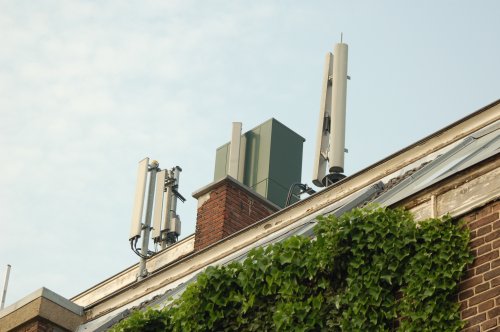Evidence has been found that genes used in making GM crops can jump the species barrier into gut bacteria. This comes from a study in 2000 that seems to have yet to be formally published, or even peer reviewed, but is interesting nonetheless.
If these genes can move into gut bacteria, there is certainly the potential for them jump to other bacteria, and possibly other organisms,
This finding probably has little to do with the ongoing discussion of bees and CCD.
Gut bacteria is very promiscuous with it’s DNA, and scientists have long suspected such a transfer could take place, but proving it has always been elusive. In this case it involved herbicide resistant genes, which in themselves are perhaps not so important, but the implications are enormous.
Key to understanding these implications is knowing how GM plants are developed. It’s more complex than just inserting a new gene, and in fact usually involves a bundle of several different genes. Among the genes often inserted is a ‘marker’ for antibiotic resistance and promoter genes. It might also be more accurate to describe it as blasting, rather than inserting.
When this bundle of new genes is ‘blasted’ into the cells to be modified, it is an imprecise procedure with a limited success rate, and indeed with the potential for causing possibly undetected genetic damage to the cell. Because the success rate is not 100%, some technique must be employed to separate the cells that have been modified successfully from those that haven’t. This is where the marker gene for antibiotic resistance comes in. By exposing all the cells to antibiotics those that have not been successfully modified and do not have the marker gene will be destroyed by the antibiotic, leaving behind only those cells which have been modified.
Promoter genes can be used to ‘switch on’ an otherwise dormant trait. This is needed because sometimes the genes to be inserted contain traits that would remain dormant without these genes. It is also suspected these promoter genes have the ability to switch on other dormant traits, with possibly unexpected results.
The fact that genes from GM crops are probably crossing the species barrier into gut bacteria is much more significant with respect to the antibiotic resistant marker gene and promoter genes, than with the herbicide resistance.
In this study genes transfered into gut bacteria of bees, but there is no reason why the same thing couldn’t happen to gut bacteria in people.
Besides the possibility of antibiotic resistant strains of bacteria developing, some GM crops are developed so they manufacture their own pesticides. If these traits were transfered to human gut bacteria this could result in pesticides being manufactured in our digestive systems.


